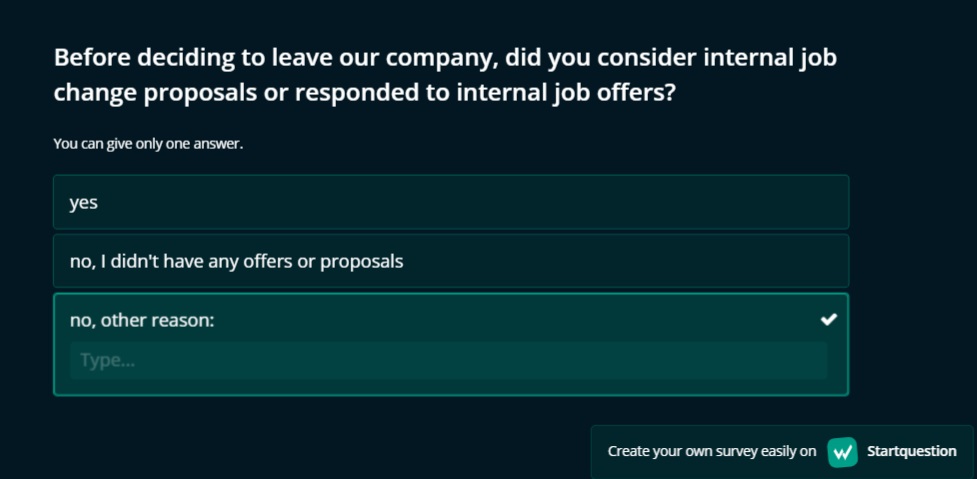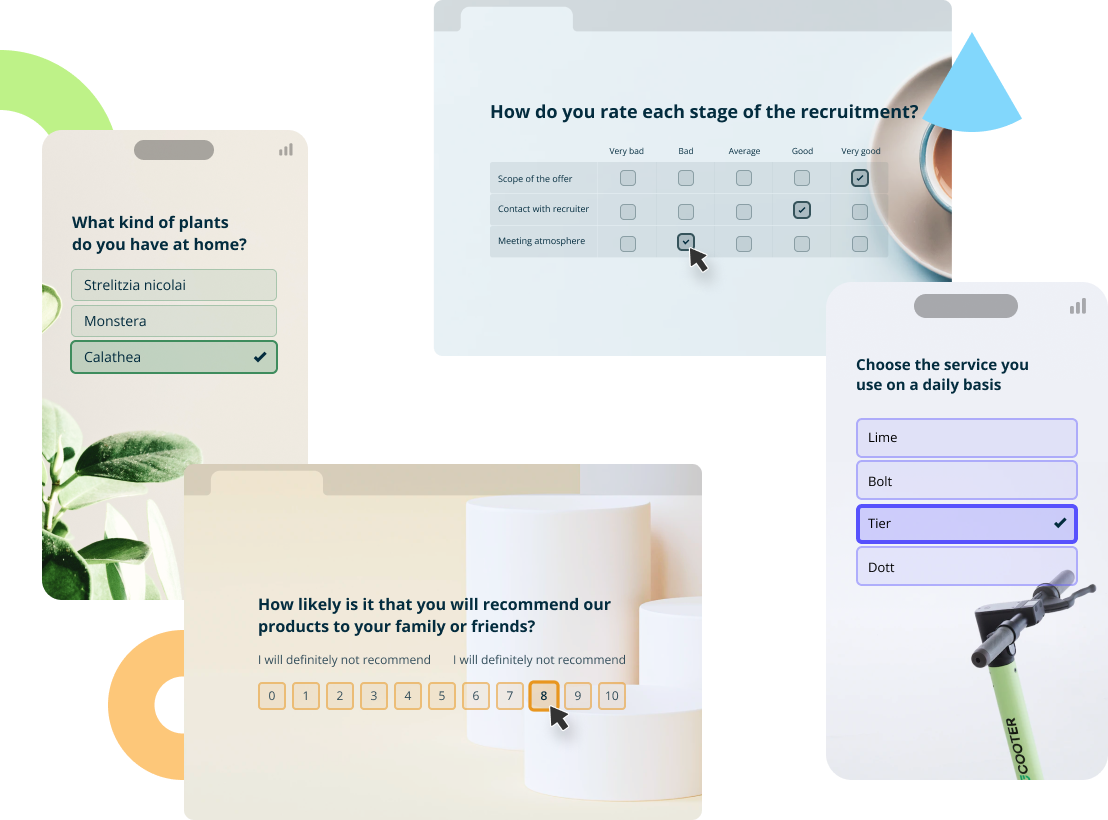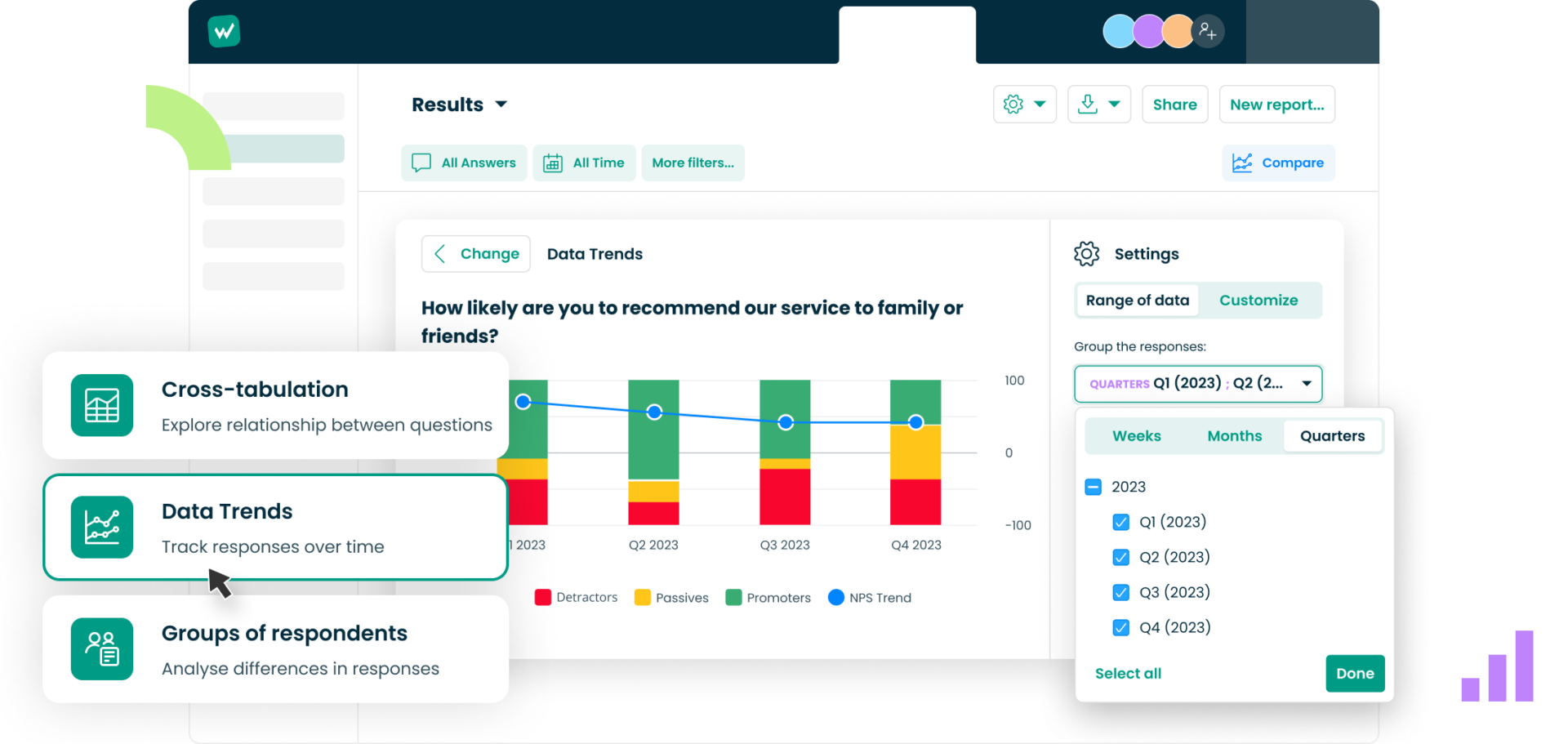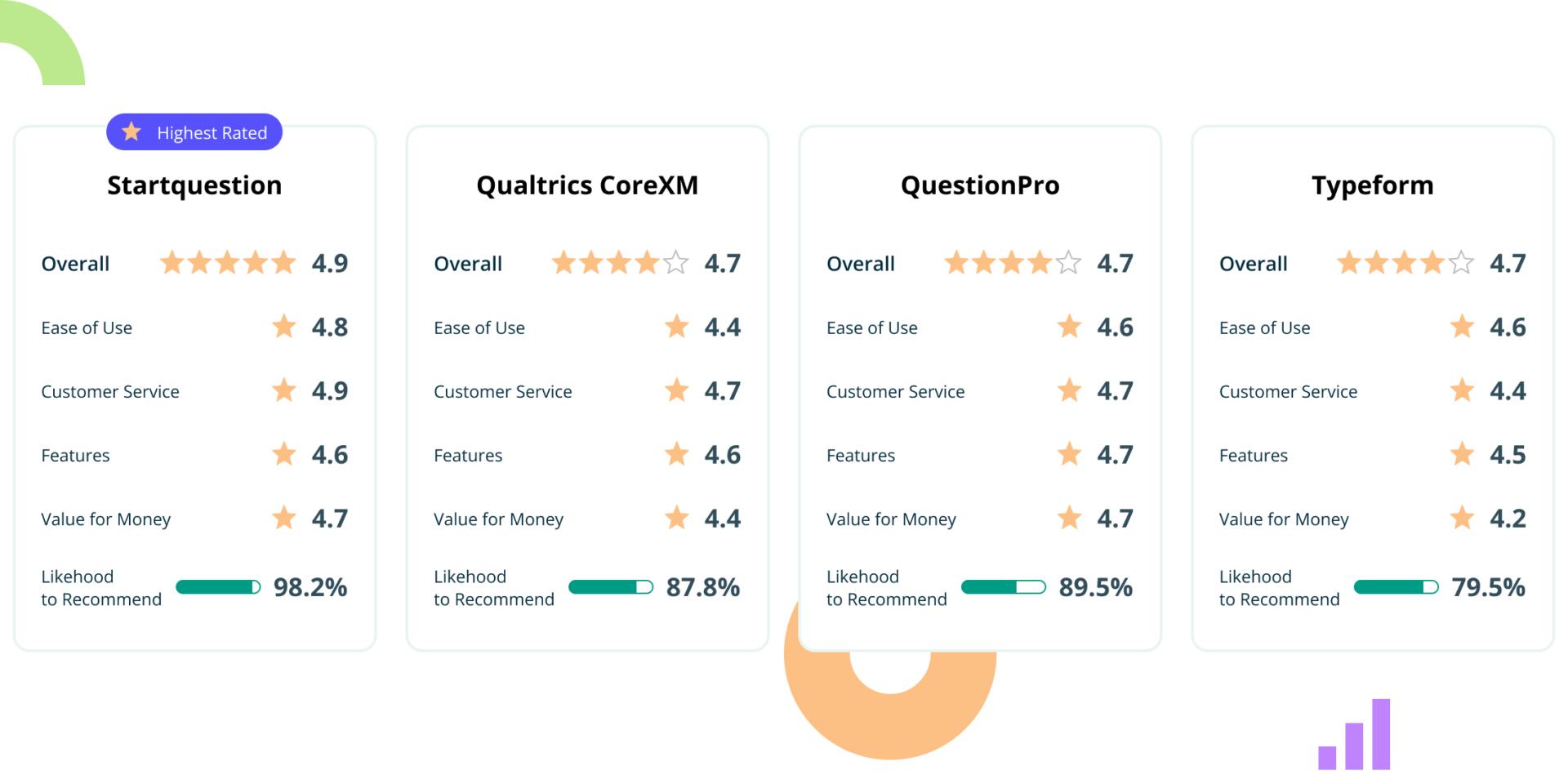Understanding your customers’ experiences and feedback is crucial for business success. While closed-ended questions provide quick and quantifiable data, open-ended questions unlock deeper insights into customer sentiments and behaviors. But how do you efficiently analyze the wealth of qualitative data that open-ended questions generate?
Meet Insightomat (created by Startquestion), an AI-powered solution designed to transform qualitative feedback into actionable insights, making it easier than ever to understand and improve your customer experience.
First, let’s start with the statistics
Did you know that 70% of buying experiences are based on how the customer feels they are being treated? Additionally, companies that leverage customer feedback outperform their competitors by 60% in terms of profitability.
These statistics highlight the importance of not just collecting but also effectively analyzing many detailed responses. With the advent of AI, businesses can now automate the complex process of analyzing open-ended survey responses, gaining meaningful insights that drive better decisions and enhance customer satisfaction.
We’ll show you how to do it right away. But now it’s time for a bit of theory.

When Should You Use Open-Ended Questions?
Open-ended and closed-ended questions are essential tools in research, each serving specific purposes for collecting valuable data. We will take a closer look at them to understand how they work and when they are effective.
What Are Open-Ended and Closed-Ended Questions?
Open-ended questions are designed to elicit detailed, qualitative data and responses. They allow respondents to answer in their own words, providing rich, contextual insights. For example, asking “What do you think of statistical analysis software?” invites a detailed and personalized response.
In contrast, closed-ended questions are structured to collect quantitative data (sometimes even with one word answers). They provide respondents with a set of predefined options to choose from, making the data easier to analyze. Examples include “Do you use statistical analysis software?” or “Have you used statistical analysis software in the past?”
Comparing Open-Ended and Closed-Ended Questions
Here are the basic differences between these popular types of questions, divided into multiple categories.
Qualitative vs. Quantitative
- Open-ended: Gather qualitative data, offering deep insights into respondents’ thoughts and feelings.
- Closed-ended: Collect quantitative data, providing clear, numerical results.
Contextual vs. Data-Driven
- Open-ended: Provide contextual understanding and background information.
- Closed-ended: Focus on specific data points for straightforward analysis.
Personalized vs. Standardized
- Open-ended: Allow for personalized, detailed responses.
- Closed-ended: Offer standardized answers, ensuring consistency across responses.
Exploratory vs. Focused
- Open-ended: Useful for exploratory research to uncover unexpected insights.
- Closed-ended: Best for focused inquiries to test specific hypotheses or quantify variables.

When to Use Each Type of Question
We already know the difference between a close-ended and an open-ended question. Now let’s see when using each type of question will bring us the most benefit from the collected feedback from survey respondents for deeper understanding of our clients (CX surveys) or employess (HR).
Use Open-Ended Questions When:
- You need to explore a topic in depth and understand the underlying reasons behind behaviors or opinions.
- It is important to capture the respondents’ language and terminology for aligning product descriptions or marketing strategies.
- Conducting preliminary research or pilot studies where detailed insights are essential.
- You want to encourage creativity and allow respondents to express complex ideas freely.
Avoid Open-Ended Questions When:
- You have a large sample size, and manual analysis of responses would be too time-consuming.
- Quick, straightforward data analysis is required for timely decision-making.
- The research aims to quantify specific variables with clear, concise answers.
Use Closed-Ended Questions When:
- The objective is to collect quantifiable data that can be easily compiled into reports.
- Consistency and efficiency in data collection are critical, especially for large-scale surveys.
- You need to test specific hypotheses or measure defined variables.
- Rapid analysis and actionable insights are necessary.
Avoid Closed-Ended Questions When:
- The research requires understanding the “why” behind respondents’ choices and behaviors.
- You want to gather detailed, contextual information that goes beyond simple yes-or-no answers.
- The topic is complex and requires nuanced responses that predefined options cannot capture.

Analyzing Open Ended Survey Questions
Analyzing answers to open-ended questions manually is a tedious and demanding task because the responses are unstructured and vary significantly in length and detail.
How to Analyze Open-Ended Survey Responses?
Each response requires careful reading and interpretation to identify themes and patterns, which can be subjective and time-consuming. This process involves analyzing each response, which demands attention to context and consistency.
With a large volume of data, manual analysis becomes practically impossible. The sheer number of responses can lead to analyst fatigue and inconsistencies, reducing the reliability of the findings. Additionally, the time and resources required for manual analysis are often prohibitive, making it difficult to derive timely insights necessary for decision-making.
Online survey tools (with analytical module) and data visualization techniques (e.g. word clouds) are therefore essential for efficiently handling and interpreting large datasets of open-ended responses. We have a solution that will fit perfectly into this trend and save you a huge amount of time.
Sentiment Analysis with AI – Meet Insightomat
Analyzing open-ended responses with ease? Well, it’s possible. Here’s how you can transform qualitative data into valuable insights.
For smaller groups of respondents (or focus groups), feedback analysis is not difficult. You read the feedback, group it in Excel file, the themes recur, so it gets easier over time to get the process done, but you feel subconsciously that this is not the most exciting job in the world.
Things start to get complicated when the group is large (e.g., customer feedback surveys in e-commerce) and the surveys are continuous (e.g., a satisfaction survey after each purchase on an Amazon-type platform).
In such situations, Insightomat comes to the rescue.
What is it?
This tool developed by Startquestion, thanks to the use of artificial intelligence, allows you to automate the process of analyzing text data and open statements. The application accelerates qualitative analysis of textual feedback and optimizes text analytics.
Who is it for?
Mainly for CX specialists. It brings the greatest value with continuous surveys and a large database. In a word, the more often you survey and have more survey results to analyze (plenty of open-ended answers), the more time and resources you will save with this solution.
How it works?
Analysis is child’s play and requires minimal human intervention. All you need to do is load the raw survey results in CSV format, select the questions which answers you want to analyze, indicate the search tags (phrases) and press start.
Intrigued? Experience Insightomat for free now!

If you’re interested in AI and how deep learning models focus on enabling computers to understand and interpret human language, you’ll probably be interested in our article on using Natural Language Processing in data analysis: Can NLP Transform Survey Analysis?
Seven Examples of Interesting Open-Ended Questions
We described what characterizes closed and open ended questions, as well as how to analyze open ended survey responses. Let’s look at some more examples of such questions, along with a discussion of how to ask in order to get valuable information.
1. What are the primary pain points your business experiences in managing B2B transactions?
Description: This question asks respondents to discuss the main challenges they face in handling B2B transactions.
Explanation: Identifying pain points in B2B transactions helps you understand the specific issues your prospect is dealing with. This insight allows you to offer targeted solutions that address these challenges, making your product or service highly relevant and valuable to their business.
2. How do you use customer feedback to improve your customer experience metrics?
Description: This question encourages respondents to explain how they incorporate customer feedback into their measurement and improvement processes.
Explanation: Gaining insights into the integration of customer feedback with metrics reveals the respondent’s commitment to continuous improvement. This information can help you demonstrate how your product or service can enhance their feedback collection and analysis processes.
3. What trends are currently shaping your industry?
Description: This question asks respondents to share their observations about influential trends within their industry.
Explanation: Understanding industry trends can provide authentic feedback into emerging opportunities and challenges. This information can help position your product or service to align with or capitalize on these trends, making it more relevant to the prospect’s needs.
4. Can you describe a recent challenge your team faced and how you overcame it?
Description: This question invites respondents to discuss specific problems they have encountered and their solutions.
Explanation: Learning about recent challenges and how they were addressed provides a window into the prospect’s problem-solving processes and priorities. This can help identify areas where your product or service can offer additional support or improvements.
5. What long-term goals do you have for your team, and how do you plan to achieve them?
Description: This question asks about the respondent’s long-term objectives and strategies for their team.
Explanation: Understanding long-term goals and plans reveals the prospect’s strategic vision. This insight allows you to tailor your offerings to support these objectives and position your product or service as a key component of their success.
6. What features are most important to you when choosing a solution for ___?
Description: This question asks respondents to specify the features they prioritize in a solution for a particular need.
Explanation: Identifying the most valued features helps you understand what aspects of your product or service to highlight. This can guide your pitch to emphasize the elements that are most likely to resonate with the prospect and meet their needs.
7. How do you differentiate your e-commerce business from competitors, and what strategies have been most effective?
Description: This question invites respondents to explain their competitive strategies and differentiation tactics in the e-commerce space.
Explanation: Understanding how a business differentiates itself and the strategies that have worked well provides actionable insights into their market positioning. This information can help you align your product or service to support their competitive edge and offer complementary benefits.

Analyze Open-Ended Questions with Survey Tools
Open-ended questions in questionnaires may seem more cumbersome than their shorter and more dynamic counterparts, but asked sensitively (too many can lead to survey fatigue and low response rates), they can work wonders, providing along lengthier responses important nuances to better understand current and new customers.
How Survey Software Can Help You
If you don’t know us yet, let us introduce ourselves.
Startquestion is a platform crafted to collect valuable feedback from both customers and employees. It facilitates prompt analysis and enables the seamless sharing of insights across the organization.
Here’s what we can do for you:
- Ready-to-use survey templates (CX, HR, market research, and more)
- One place to create, distribute, and collect survey responses
- Intuitive and easy-to-use analytical tools
- Ability to create reports and share results within the team
- Sentiment analysis with the help of artifficial intelligence
Would you let us help you?










